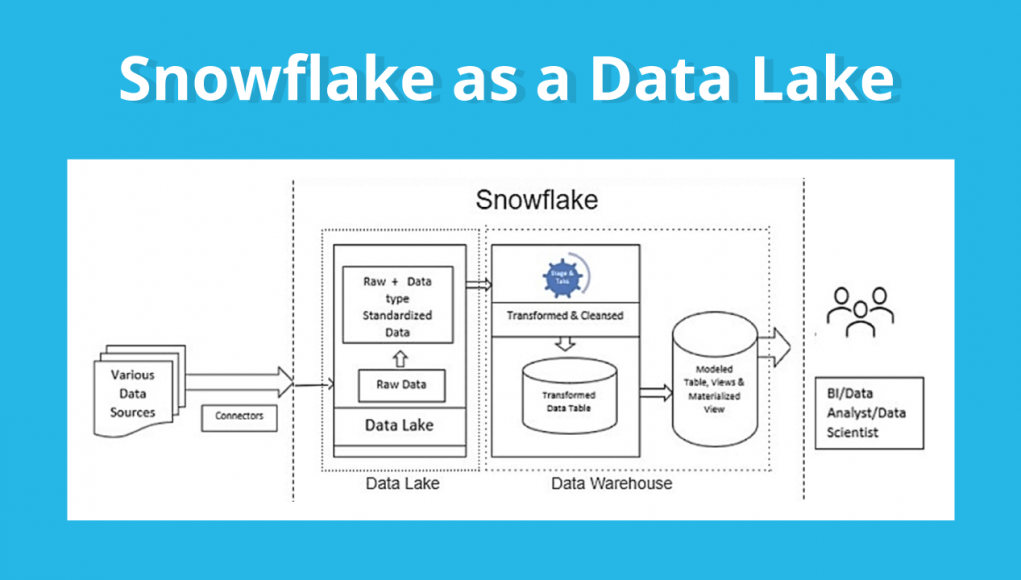As per a Forbes article, any company that isn’t continuously reinventing its business(with data at its core) will not be able to survive the cut-throat and disruptive market evolutions.
With the use of data in Artificial Intelligence, Machine Learning, Deep Learning, or Data Analytics, organizations are able to make business decisions more efficiently and faster than ever before.
Business Intelligence and Analytics make it possible to combine data from multiple sources, analyze the information, and then disseminate the information to relevant stakeholders. This allows companies to see the big picture and make smart data-driven business decisions. There are always risks involved when it comes to making any business decision, but those risks aren’t as worrisome when you are implementing an effective and reliable Business Intelligence solution. Organizations equipped with Business Intelligence technology can move forward in an increasingly data-driven culture and industry environment with confidence, knowing they are prepared for any challenge that arises.
Key Features of Snowflake
With Cloud-based Data Warehousing acquiring demand, a Cloud Business Intelligence solution is progressively significant for organizations. A Cloud Business Intelligence methodology takes into account scalability, security, and flexibility for a cost-effective model. One popular Cloud Data Warehouse is Snowflake. However, you can also find the comparison between snowflake vs redshift in this article. Snowflake’s Data Cloud is a Software-as-a-Service (SaaS) technology.
Data Integration
Data integration is an important aspect of Business Intelligence and Analytics. Data integration into Cloud Warehouses is facilitated by ETL/ELT tools. They ingest all kinds of data(Structured, Semi-Structured, Big Data, Unstructured, etc) as Data Streams. They also help in the transformation of data(data type conversion, summarization, etc.). Some popular ETL tools include Hevo Data, Stitch, Fivetran, etc.
Data Storage
When data is loaded from multiple sources into Snowflake, it revamps that data into an optimized, compressed, and columnar format. Snowflake stores this optimized data in its Cloud Storage facility. Snowflake deals with all aspects of how this data is stored — the organization, file size, structure, compression, metadata, statistics, and different aspects of data storage are handled by Snowflake. The data objects stored by Snowflake are not straightforwardly available for clients( can be only run through SQL query operations in Snowflake).
Data Warehouse Performance
Snowflake houses an Elastic on-demand scaling of storage and computes resources. It has a massive Parallel Processing database that has a materialized view support (this includes reusing results of analytical queries that are pre-computed), results are cached, and is fault-tolerant. It also predicts and prioritizes queries in ML resulting in an increase in performance and concurrent management efficiency.
Data Warehouse Management
Snowflake provides automated infrastructure provisioning and this is why scaling up and down in a Cloud Data Warehouse is simple, fast, and cost-effective. Snowflake also facilitates automatic backup of data(as data replicates in different storage locations) in case of a system crash or failure. It also houses a few pre-built data Integrations.
Security
Snowflake ensures the implementation of security protocols and compliance because all the data leveraged by its users will be sensitive business data. So, security is of great prominence. Snowflake provides data encryption, granular access control, user authentication, and authorization for data access. It also has compliance with GDPR, HIPAA, PCI DSS, etc.
All the above features make Snowflake the best choice for a Cloud Warehouse to perform Analytics.
Snowflake Cloud Warehouse for Business Intelligence and Analytics
Snowflake enables data storage, processing, and analytic solutions that are faster, easier to use, and far more flexible than traditional offerings. The Snowflake platform is neither built on an existing database technology nor a Big Data software platform. Snowflake’s platform introduces an innovative architecture that comprises a completely new SQL query engine natively designed for the Cloud. Snowflake provides an enterprise analytic database with numerous intuitive features and unique capabilities for its users.
Snowflake’s Data Cloud promotes fast and in-depth data analysis and visualizations through its partnerships with Tableau, Qlik, and some other Business Intelligence software. With Snowflake, you can support an unlimited number of concurrent virtual users and queries with near-unlimited, dedicated compute resources. You can query Semi-Structured data seamlessly with SQL using your most loved Analytics and Business Intelligence tools. From data management to analytics, Snowflake’s data software integrations empower customers to use Snowflake’s flexibility, performance, and ease of use to convey more significant data insights.
Conclusion
In this article, you have learned about Snowflake and how its features make it an ideal Data Warehouse solution for Business Intelligence and Analytics.
Follow Technoroll for more!





